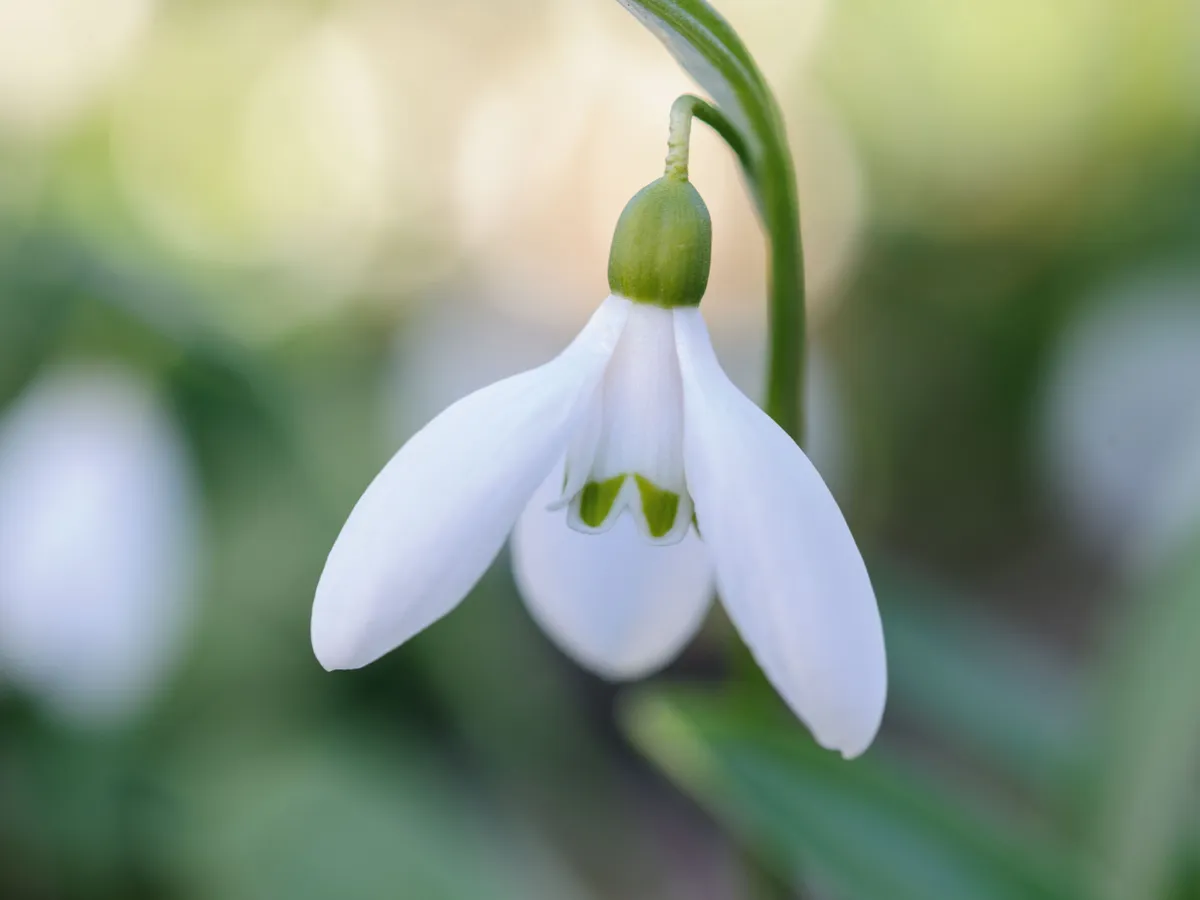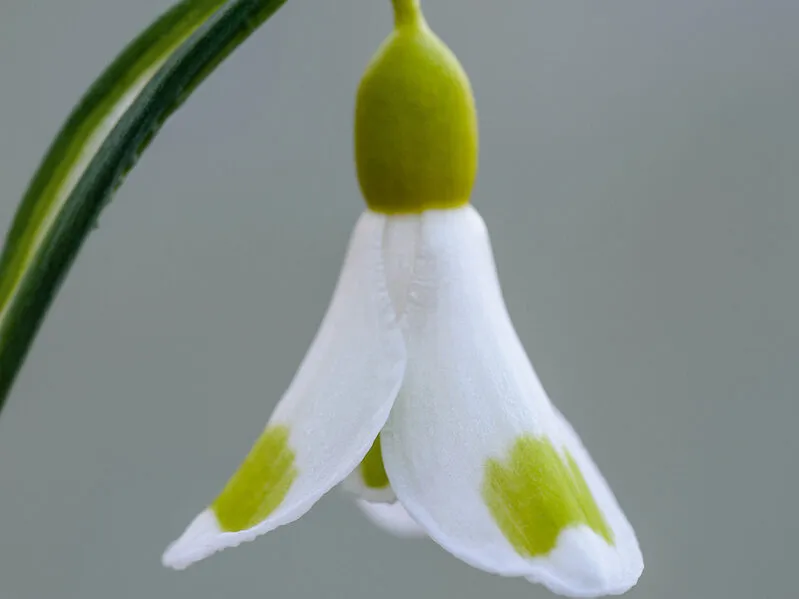It seems odd that a flower as small and unassuming as the snowdrop could inspire utter obsession in otherwise perfectly normal people. The affliction of galanthophilia can often be diagnosed by the sufferer’s prostrate habit - lying on the cold ground to get a better look at the delicate markings on the inner and outer petals.
You may also like
- Easy to grow snowdrops that will naturalise in your garden
- The best snowdrop walks and gardens to visit
- How to propagate snowdrops
This condition drives these snowdrop lovers, or galanthophiles, to queue for hours in the cold to get best dibs on the snowdrops for sale at February plant fairs and attend tours and lectures by experts as lauded in the community as any Comic-Con panel. They even have their own unofficial vocabulary – ‘miffy’ being a term applied to snowdrops that don’t do well in a garden, for example.

To the uninitiated, it’s hard to understand how these diminutive early spring blooms can evoke such passion in some gardeners that a single bulb will command a price tag in the hundreds of pounds, but in the past 20 years, as snowdrop collecting has become more popular and competitive, it has led to bidding wars over rare and unusual types. First, there was ‘Green Tear’, which sold for £360, followed by Galanthus woronowii ‘Elizabeth Harrison’, which Thompson & Morgan bought for £725.
Yellow snowdrops? Yes, they do exist - and command a high price
That unusual variety, with yellow markings instead of green, was found by accident just growing away in a garden in Perthshire, but it is more typical for these expensive types to be the result of years of breeding development via crosses and slow, slow propagation to bulk up stocks. The apex of the craze came with one such bred snowdrop, called ‘Golden Fleece’, which took almost a decade of work by Joe Sharman of Monksilver Nursery to create, and was sold at auction on eBay for the eye-watering price of £1,390 in 2015. That sale was eclipsed in 2022, when Galanthus 'Golden Tears' sold for a record busting £1,850. It was also bred by Joe Sharman.

Head gardener Lou Nicholls is a recent convert to galatho-geekery. She had always enjoyed seeing swathes of white lighting up the gardens when she worked at Hole Park in Kent, but her fascination didn’t really begin to develop until a few years ago, when she bought several ‘Wendy’s Gold’ plants at a fair at the Chelsea Physic Garden for £7.50 each. Sadly, those plants were all attacked by narcissus bulb fly, but Lou kept going, and has since accumulated a container collection she repots religiously every year; and she has helped her boss at Ulting Wick garden in Essex, Philippa Burrough, develop a collection of around 130 types, in a shared obsession.
Lou can’t pinpoint exactly why she fell so hard for these early flowers, but she does love the origin stories behind them, as they are often named for the people who bred, discovered or developed them, such as ‘Veronica Cross’, ‘Don Armstrong’ and ‘Wol Staines’, or their families or gardens.
To bone up on your Galanthus knowledge and create your own collection of interesting varieties, she recommends visiting snowdrop fairs and well-known snowdrop gardens, like Colesbourne and Painswick, for starters, but also trying National Garden Scheme gardens open for snowdrop visits, as they will often have interesting excess stock for sale on the day. She particularly marks out Waterperry Gardens in Oxfordshire, where the snowdrops on display are clearly labelled so you can see and identify which types you like best.
Discover the best places to see snowdrops

There are lots of resources online too, and Lou recommends joining some of the specialist snowdrop Facebook groups where you will pick up lots of tips and information. Most of the auctions for those rare expensive types take place on eBay, where you should exercise some caution before parting with your cash – dodgy dealers have been known to promise a rare bulb and send out a clump with a few green leaves, which one year later turns out to be a bog-standard snowdrop. Reputable eBay auction sellers of rare types include Joe at Monksilver, Matt Bishop, Aaron Davies and John Grimshaw.
However you can always pick up a range of cheaper beautiful, more common species and cultivars such as Galanthus nivalis, double Galanthus nivalis f. pleniflorus ‘Flore Pleno’, Galanthus ‘Atkinsii’ or Galanthus ‘S. Arnott’, from larger nurseries and retailers, some of which are listed below.
Discover the best snowdrops for your garden.
Although the rare types are propagated while dormant, by chipping or twin scaling the bulbs, most common varieties are simply allowed to bulk up underground and then split into smaller clumps when ‘in the green’, or while in active growth in early spring. This means you should look out for ‘in the green’ snowdrops for sale from February onwards, and plant them as soon as they arrive, for the greatest chance of success.
Where to buy snowdrops in the green
If grown in the ground together in a garden setting, different types of snowdrops will happily breed and cross with each other willy-nilly, and so collectors often grow in pots like Lou, repotting every year, or separately in baskets which they sink into the earth, and stop plants from going to seed, to avoid mixing and keep their stock pure.
Of course, there’s always the chance that one of your spontaneous garden crosses will be the next accidental must-have Galanthus, making you a mint on the snowdrop circuit – but whichever varieties you grow, they are sure to light up the dark, dull days of late winter and early spring with their wonderful welcome blooms.
Snowdrops for sale: where to buy snowdrops
Ashwood Nurseries
Avon Bulbs
Beth Chatto
Broadleigh
Cambo
Crocus
Edulis
Elworthy Cottage
Foxgrove
Hardys Cottage Garden Plants
Harveys Garden Plants
Monksilver
North Green
Sarah Raven
Thompson & Morgan
WS Lockyer
